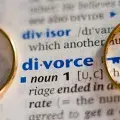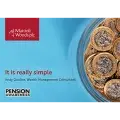Should I transfer my old pension? This is one of the most asked questions we as Employee Engagement Consultants get asked. Ultimately this is down to you and what your goals are for wanting to amalgamate, or to leave things as they are. We would always recommend getting financial advice in relation to pension transfers but understand that the costs involved may be off putting, especially when you have several pensions to possibly transfer.
If you choose not to seek advice, MoneyHelper.org.uk is a government backed, free and impartial website which provides guidance on financial matters. In the event of a transfer request if you are over 50 years old, your existing provider will suggest you seek guidance from ‘Pension Wise’, which is also a government backed, free service to arrange an appointment.
Regardless of whether you want to transfer your pensions or not, there are always some points you should review which might help to make that decision easier. Please note we will be focusing on pension transfers of defined contribution schemes and not defined benefit or final salary schemes.
- First and foremost, most pension schemes that you have will have a yearly charge applied, also known as the annual management charge (AMC). This is taken automatically from your pension savings, normally once a month or once a year. If your pension is a workplace pension the maximum charge for the default fund would be 0.75% however, personal pensions could charge more. You could have two pensions with the same provider but based on the terms agreed by the employer, the AMCs could still differ. For example, say you have two pensions both worth £10,000 where one applies an AMC of 0.70% and the other 0.35%. This means you would have paid an annual fee of £70 on the first but only £35 on the other. If you choose your own funds within the pension, you might have to pay additional fund charges on top of the AMC. Another point to note is that some providers offer discounted charges the bigger your fund is, meaning higher savings incur lower charges.
- The second factor you could review is the investments available within your pension. This could be the types of investments available, for example if you wish to invest in something other than the default fund, such as ethical or sustainable funds. Another point is that each of the providers have their own investment managers for their own internal funds, who look after each of these funds and the views of one manager will differ to the other. This is one reason why people may wish to keep their funds separate as they feel it is not being managed all by one team. You could also review the investment performance, however past performance is not an indicator for the future but may be something you wish to consider. You could have two funds which invest quite similarly on the surface but the investments beneath them are different, which reflects in the performance or risk taken.
- Thirdly, you should check if there are any transfer out fees, charges or penalties to move the money from one provider to another. This is becoming less likely, but you would want to check to ensure you do not get penalised.
- The fourth thing to review is whether there are any protections, guarantees or bonuses being applied to your pension which if you were to transfer you would lose, such as a protected tax-free cash lump sum in excess of 25% of the fund or a protected retirement age below 55. This is more likely to apply to older style pensions and a common guarantee you may have heard of could be guaranteed annuity rates. This is a fixed rate that is written into your pension contract so that on a given date you can convert your fund into an annuity, irrespective of what open market rates are doing at that time. It is usually only available at the scheme’s selected retirement age. Another thing to check for is a ‘with profits’ investment, which is a fund that is meant to help ‘smooth out’ peaks and troughs within the pension. Essentially it invests in a range of assets, but the investment return is calculated in a way in which you are awarded an ‘annual bonus’ which is added to your policy; however, annual bonus levels can fluctuate and there is no guarantee that bonus will be paid annually. If you were to leave the fund before the selected retirement date the provider may apply a Market Value Reduction (MVR). This is an adjustment factor to maintain fairness for all investors in times of poor performance and may mean that your transfer value may be lower than the fund value. If you find any pension that does have any type of guarantee or bonus and you are still thinking about transferring, we always suggest speaking with a financial adviser as they will be able to clearly explain what the implications of transferring would be.
- Some people like to keep their pensions separate, as it may allow them to access the benefits under ‘small pot’ rules. This allows up to three pots of under £10,000 each (for non-occupational schemes, or unlimited occupational plans) to be taken as a lump sum, subject to certain conditions.
- Finally, our thoughts move to retirement and how you wish to withdraw the money from your pension. Does the current pension provider offer all of the retirement options available (annuity, drawdown, withdraw in one go)? If not, it is another consideration for individuals when deciding whether to transfer. As a brief overview, you can usually take 25% of your pension fund tax free and the rest is used to provide you with a taxable income during retirement, however the way you withdraw the money may impact how much you pay in tax. An annuity is where you give the pension pot to a provider who in return offers you a regular income for life. Drawdown means you take out as much or as little of the pot as you like until it runs out. You can also withdraw your whole fund in one payment however you are likely to have a larger tax bill in this way.
Providers are trying to make transfers a lot easier to process, with many allowing you to do so via online accounts or through their apps, but we would always strongly recommend that you review your pension before proceeding. Be aware that recent changes in legislation required providers to introduce additional checks to protect you against scam transfers, which may slow the process down. You could lose a valuable benefit or move from a lower charging pension just to reduce your life admin load.

































































































































































































